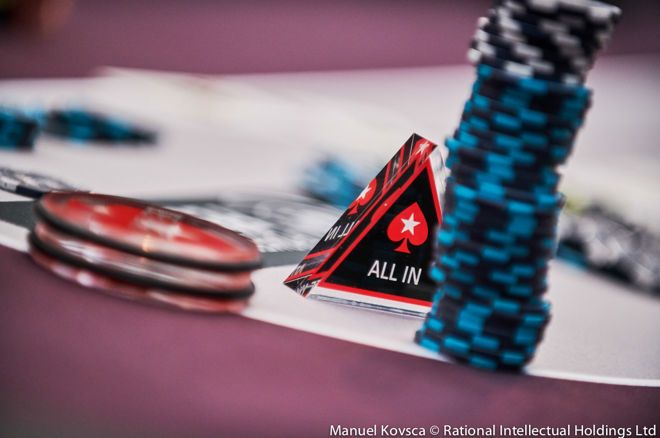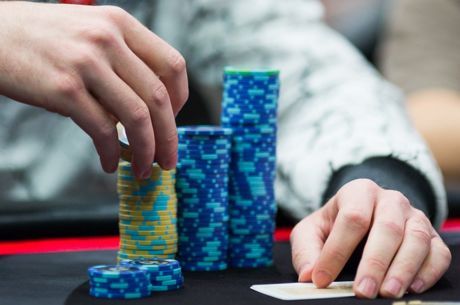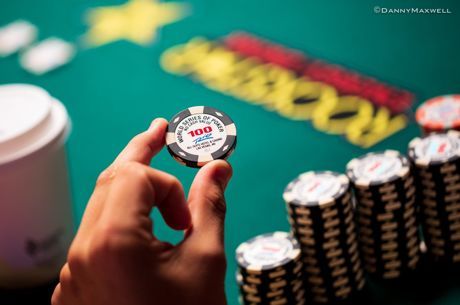Hand Analysis: It's Not Always Enough to Flop the Nuts

Sometimes when playing online poker you'll find yourself going to the flop and the exact three cards you were hoping for appear on the screen. What luck!
However, when that does happily happen, it's easy to become blinded and stop thinking critically as you should.
When a less-than-perfect flop comes and you find yourself floating in the middle of your range, it's sometimes easier to put on your thinking cap and assess the situation to figure out where exactly in the middle you are. With the nuts, though, some players simply stop thinking things through like they should.
The following hand played online at the 100NL ($0.50/$1) six-handed Zoom tables provides an example of a player who was able to keep thinking even after those first three cards brought exactly what he wanted.
Immediate Intrigue
A weak recreational player opened the pot from under the gun, a seasoned regular defended the big blind, and the flop came A?K?10?. We have an interesting situation already.
For one thing, the big blind can have four times as many combinations of the nuts as the UTG player. Some players might be raising QxJx-offsuit preflop here, but not all players, and not this one.
On the other hand, the big blind cannot have AxAx, KxKx, or AxKx.
The big blind can also have a lot of pieces of the flop with hands like Jx10x, KxJx, Ax5x-suited and other heart flush draws with cards under the board.
These hands that partly hit the flop are going to be under a lot of pressure moving forward. If the big blind faces two bets unimproved, he'll struggle to see the river, which most want to see. Jx10x would like to see if it can hit a queen or a ten, and flush draws want to draw for cheap, especially if they pair up on the turn or turn a gutter �� think 9?8? on an offuit-six turn.
What is nine-high with a gutter and a flush draw supposed to do on the turn when out of position against two bets from a strong range?
Protecting Ranges
In some situations you want to protect a value-raising range by having some bluffs. After all, if you only have value, your opponents might fold a lot, and you can make a few extra bucks throwing in some bluffs that benefit from those folds.
In a situation like this, the big blind needs to think ahead. He can't check-raise the flop with 9?8? so easily, as he'll face too much resistance from the nuts, sets, top two, better flush draws, and the nuts with a flush draw. In other words, all sorts of trouble lies down that path.
But on the other hand, the big blind doesn't want to get to the turn and have to check-fold or check-call with no showdown value. He can't so easily lead rivers as a bluff. In the offsuit-six turn example with 9?8?, only offsuit jacks and queens will be potential cards to lead river with as a bluff, and those cards will make UTG's hand some of those times.
So check-raising the flop is not a bad plan, but it has issues. What about check-raising the turn, though? Being able to check-raise the turn will put the UTG player in a tough spot even when he has top two pair. If he shovels the money in he'll get some folds and then be snap-called by the nuts often.
The Real Value of the Nuts
Having the nuts in your range creates profitability for so many of your other hands. They can't be bluffed easily, they get free cards and free showdowns as a result, and they can be turned into bluffs or semi-bluffs with a real threat behind them.
The big blind needs to take advantage of the fact that he has all 16 combinations of Broadway on this flop. I think actually, he can do that by protecting all his ranges, his flop check-calling range, his turn-checking range (and check-raising range), and his river-checking range.
Sometimes the board is going to run out with a jack or a queen, and this will be natural to protect for the big blind since he has hands like Jx10x, KxQx, and AxJx in his range. The big blind doesn't need to protect against these runouts, nor flushing runouts for similar reasons.
But on blank runouts and on board-pairing ones, the big blind will be vulnerable. This vulnerability will get worse if he check-raises pocket tens on the turn and plays all his straights fast.
In the hand as it actually played out, the big blind check-called the A?K?10? flop, then check-raised after the 5? turn. UTG called, then after the 8? river the big blind bet two-thirds pot.
The under-the-gun player then shoved with 10?10? (when he should have called or folded), and got stacked when the big blind called and showed Q?J?.
It might seem implausible to play queen-jack slow here, but it is sometimes necessary, which is to say that, given that the big blind had all 16 combinations of straights in his range, not all of those combos should be played in the same way.
The Q?Jx combos should almost always check-call the flop here (as the big blind did). The same goes for Q?J? (with the backdoor flush) �� that hand, too, should find its way to the river frequently.
The big blind flops the nuts often enough he can spread the combinations across different ranges, protecting himself to earn maximum profit. If he keeps thinking clearly after crushing the flop, of course.









